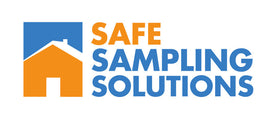Asbestos Sampling Kit Use
“Asbestos is a hazardous substance that is dangerous to human health. We strongly recommend that you …” We strongly recommend that you take professional advice before handling, sampling or disposing of asbestos products. The below is for guidance purposes only.
Before taking samples please follow the WorkSafe guide/information for homeowners - Link
Before taking samples please follow the WorkSafe guide/information for businesses and workers – Link
PPE should be worn at all times when handling suspected asbestos. Please follow Worksafe advice on PPE requirements.
On request the following PPE can be added to your basic sample kit order: overalls, mask, and gloves.Safety glasses are not available from Hills”.
Before taking samples, assess the condition of the material to see if fibre release may occur. If it is in a deteriorated condition, you must get advice from a professional. Worksafe provides details of Link Asbestos Licenced Removal professionals.
The asbestos sampling kit is intended to provide the means to have a sample tested at an accredited laboratory, and does not constitute an asbestos survey.
When taking your samples follow the steps below:
- Please read the Worksafe guidelines on asbestos (links are above).
- Assess the area to be sampled and clear away furniture, toys, etc from the area.
- Other equipment which may be required depending on the sample to be supplied: Noise pliers, knife or chisel, paint brush, damp cloth or mist spray, a drop sheet, and glue. These items are to be handled with care and risks assessed before use.
- Put on the required PPE.
- Put down a drop sheet for potential spills from the sampling process. This must be carefully disposed of after the completion of sampling.
- After assessing the extent of the material and any variations or repairs, a representative sample of about 3-5 cm2 area and through the entire depth of the suspect material should be taken. The sample must be representative of the whole material (This is from the HSG 248, Asbestos: The analysts' guide for sampling, analysis and clearance procedures)
- Double bag the sample in the bags provided, by placing it in the first bag and ensuring it is sealed, then placing it in the second bag and ensuring that it is sealed well.
- Once finished sampling, seal the area where the sample was taken with adhesive which is applied with a brush.
- Clean the tools with a wet wipe after any sample is taken to avoid cross contamination.
- When all samples have been taken, wipe down all PPE and equipment used with a wet wipe (standing on the drop sheet if one was used).
- All items used in the sample process should be treated as if there is asbestos present and so must be carefully removed and disposed of. Remove PPE and place in the large zip lock plastic bag provided (if PPE was purchased). Start with the overalls turning them inside out as progressing, remove the mask, eye protection and then gloves. Place all wet wipes, drop sheets or other waste material in the bag and seal. Double bag the disposable material and dispose of as per Worksafe – Link or your local Council’s advice.
- Clearly label each sample bag with a sample location, date and name. If taking samples from multiple properties please identify which samples have come from which property on the sample bags.
- Complete the chain of custody form.
- Place the samples in the courier bag provided and send.
Other Resources:
Link – Asbestos health advice for householders
Link - Health and Safety at Work (Asbestos) Regulations 2016
